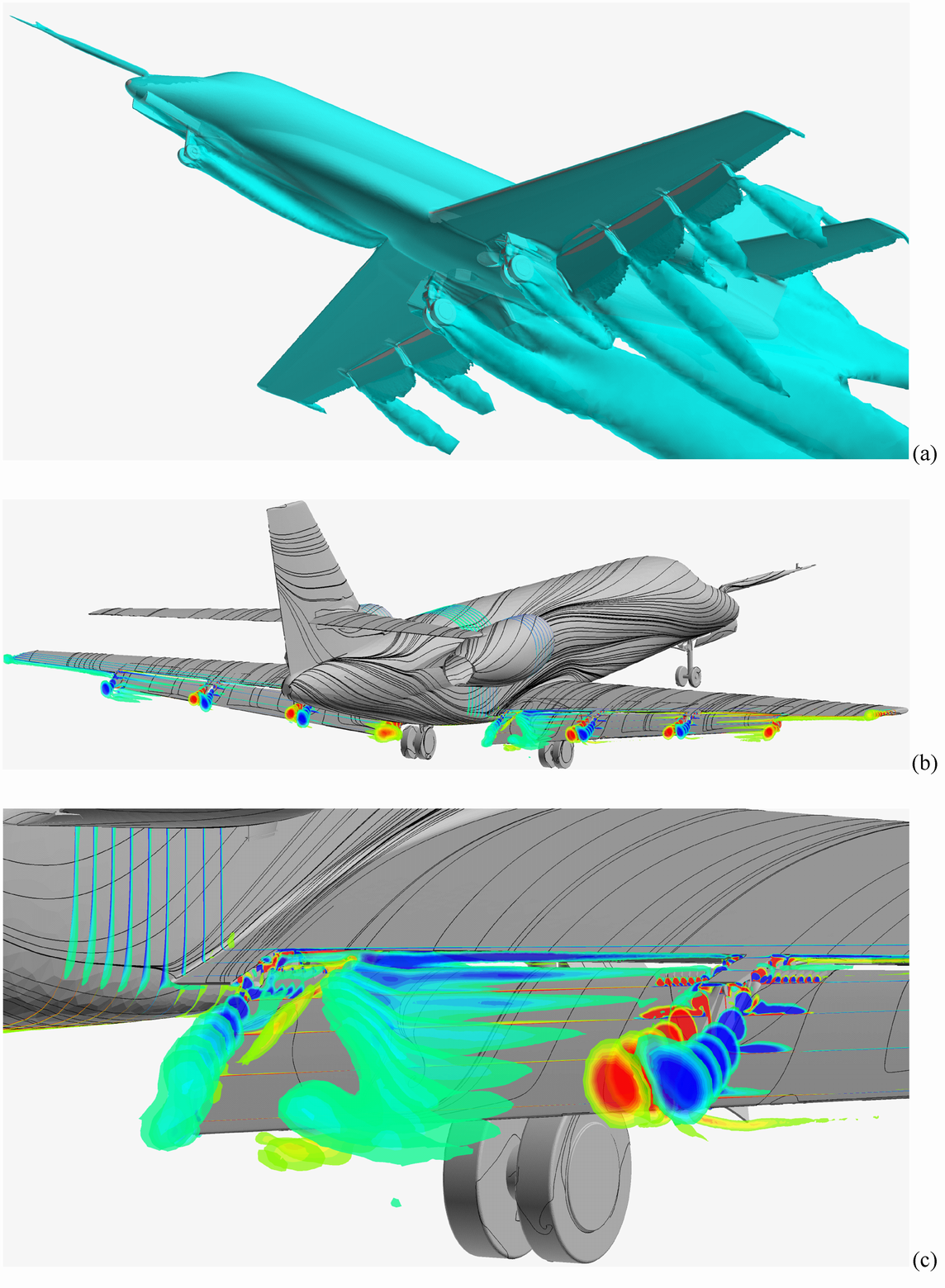Computational Simulations for Aircraft Modification Design in the FQUROH Project
JAXA Supercomputer System Annual Report April 2016-March 2017
Report Number: R16E0027
- Responsible Representative: Kazuomi Yamamoto(FQUROH Project Team (Flight Demonstration of Quiet Technology to Reduce Noise from High-Lift Configurations Project Team), Aeronautical Technology Directorate)
- Contact Information: Yasushi Ito(ito.yasushi@jaxa.jp)
- Members: Kazuomi Yamamoto, Yasushi Ito, Takehisa Takaishi, Mitsuhiro Murayama, Ryotaro Sakai, Tohru Hirai, Kentaro Tanaka, Kazuhisa Amemiya, Gen Nakano, Takashi Ishida
- Subject Category: Aviation(Aircraft,Body sound)
Abstract
The FQUROH project aims at raising the technical maturity level of the noise reduction technology for high-lift devices and landing gear, which draws international attention to reduce noise in areas around airports, to a level applicable to future development of aircraft and related equipment. This contributes to reduction of aircraft noise in local communities around the airport and airline operating costs by reducing landing fee. One of the objectives of the FQUROH project is to verify the feasibility of practical noise reduction concepts and design methods based on advanced computational simulations through modification of aircraft.
Goal
Objective
References and Links
Use of the Supercomputer
Computational simulations were performed as part of the FQUROH project to understand Reynolds number effects resulting from wind tunnel testing and to select low noise add-on devices that did not affect the flight performance of experimental aircraft in an expected flight envelop.
Necessity of the Supercomputer
The JSS2 enabled a large number of high-fidelity computational simulations with aerodynamically-important details in several flight configurations (flap deflection angle settings, landing gear positions, etc.) in the expected flight envelop (i.e., needs to consider several angles of attack, sideslip angles, etc.). The aerodynamic effect of low-noise devices was able to be evaluate and quantified, which was difficult only with wind tunnel tests.
Achievements of the Year
Low-noise devices for flaps and landing gear that did not affect the flight performance and the structure of the JAXA’s experimental aircraft, ‘Hisho,’ were selected for the second demonstration flight test scheduled in 2017 based on computational results. Many Reynolds averaged Navier-Stokes (RANS) simulations were performed with a high-fidelity geometric model in different configurations at low to high angles of attack around the stall angle and low to high angles of sideslip with a fixed angle of attack. Hisho’s flight characteristics and performance were analyzed with and without the low-noise devices based on the computational results and it was confirmed that the difference of the aerodynamic performance of Hisho with and without the low-noise devices was quantitatively small. The computational results were also used to understand the formation of flap tip vortices and flow separation around the low-noise devices, which had a strong correlation with the generation of airframe noise,

Fig.1:Hisho gear-down, 35° flap deflection angle configuration without low-noise devices (angle of attack of 0°, sideslip angle of 10°, wind speed of 175 kt): (a) Total pressure contour surface; (b) Surface stream lines and x component of vorticity on cross-flow cross-sections around the flaps; (c) Enlarged view of b around the leeward inboard flap

Fig.2:Hisho gear-down, 35° flap deflection angle configuration with flap and landing-gear low-noise devices for the flight test in 2017 (angle of attack of 0°, sideslip angle of 10°, wind speed of 175 kt): (a) Total pressure contour surface; (b) Surface stream lines and x component of vorticity on cross-flow cross-sections around the flaps; (c) Enlarged view of b around the leeward inboard flap.
Publications
N/A
Computational Information
- Parallelization Methods: Hybrid Parallelization
- Process Parallelization Methods: MPI
- Thread Parallelization Methods: OpenMP
- Number of Processes: 108-432
- Number of Threads per Process: 8
- Number of Nodes Used: 14-54
- Elapsed Time per Case (Hours): 10-30
- Number of Cases: 320
Resources Used
Total Amount of Virtual Cost(Yen): 47,781,418
Breakdown List by Resources
| System Name | Amount of Core Time(core x hours) | Virtual Cost(Yen) |
|---|---|---|
| SORA-MA | 28,549,346.02 | 46,495,216 |
| SORA-PP | 60,194.53 | 513,940 |
| SORA-LM | 0.17 | 3 |
| SORA-TPP | 0.00 | 0 |
| File System Name | Storage assigned(GiB) | Virtual Cost(Yen) |
|---|---|---|
| /home | 79.30 | 748 |
| /data | 16,283.90 | 153,606 |
| /ltmp | 3,301.71 | 31,145 |
| Archiving System Name | Storage used(TiB) | Virtual Cost(Yen) |
|---|---|---|
| J-SPACE | 190.05 | 586,757 |
Note: Virtual Cost=amount of cost, using the unit price list of JAXA Facility Utilization program(2016)
JAXA Supercomputer System Annual Report April 2016-March 2017


